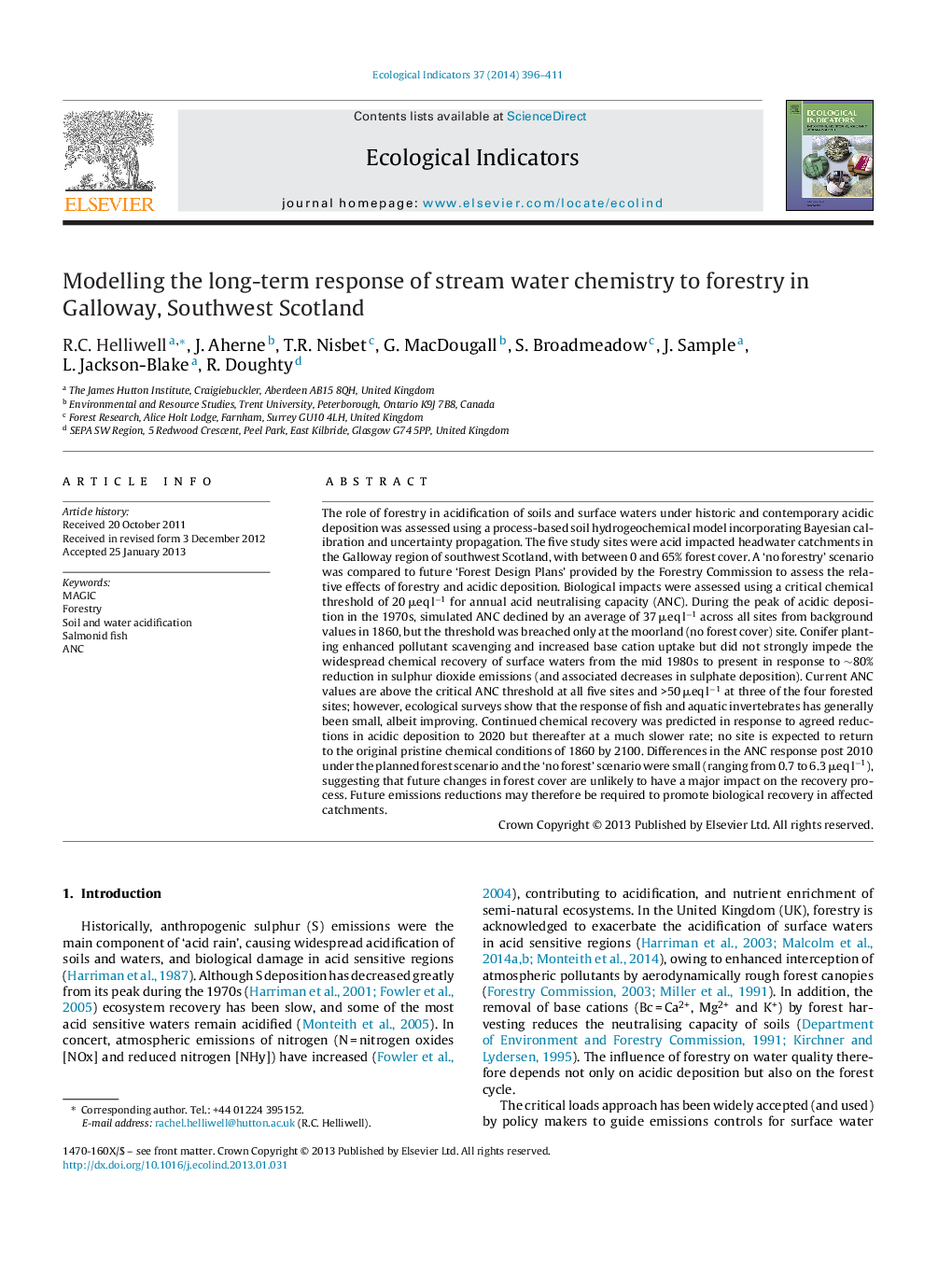| Article ID | Journal | Published Year | Pages | File Type |
|---|---|---|---|---|
| 6295225 | Ecological Indicators | 2014 | 16 Pages |
Abstract
The role of forestry in acidification of soils and surface waters under historic and contemporary acidic deposition was assessed using a process-based soil hydrogeochemical model incorporating Bayesian calibration and uncertainty propagation. The five study sites were acid impacted headwater catchments in the Galloway region of southwest Scotland, with between 0 and 65% forest cover. A 'no forestry' scenario was compared to future 'Forest Design Plans' provided by the Forestry Commission to assess the relative effects of forestry and acidic deposition. Biological impacts were assessed using a critical chemical threshold of 20 μeq lâ1 for annual acid neutralising capacity (ANC). During the peak of acidic deposition in the 1970s, simulated ANC declined by an average of 37 μeq lâ1 across all sites from background values in 1860, but the threshold was breached only at the moorland (no forest cover) site. Conifer planting enhanced pollutant scavenging and increased base cation uptake but did not strongly impede the widespread chemical recovery of surface waters from the mid 1980s to present in response to â¼80% reduction in sulphur dioxide emissions (and associated decreases in sulphate deposition). Current ANC values are above the critical ANC threshold at all five sites and >50 μeq lâ1 at three of the four forested sites; however, ecological surveys show that the response of fish and aquatic invertebrates has generally been small, albeit improving. Continued chemical recovery was predicted in response to agreed reductions in acidic deposition to 2020 but thereafter at a much slower rate; no site is expected to return to the original pristine chemical conditions of 1860 by 2100. Differences in the ANC response post 2010 under the planned forest scenario and the 'no forest' scenario were small (ranging from 0.7 to 6.3 μeq lâ1), suggesting that future changes in forest cover are unlikely to have a major impact on the recovery process. Future emissions reductions may therefore be required to promote biological recovery in affected catchments.
Keywords
Related Topics
Life Sciences
Agricultural and Biological Sciences
Ecology, Evolution, Behavior and Systematics
Authors
R.C. Helliwell, J. Aherne, T.R. Nisbet, G. MacDougall, S. Broadmeadow, J. Sample, L. Jackson-Blake, R. Doughty,
